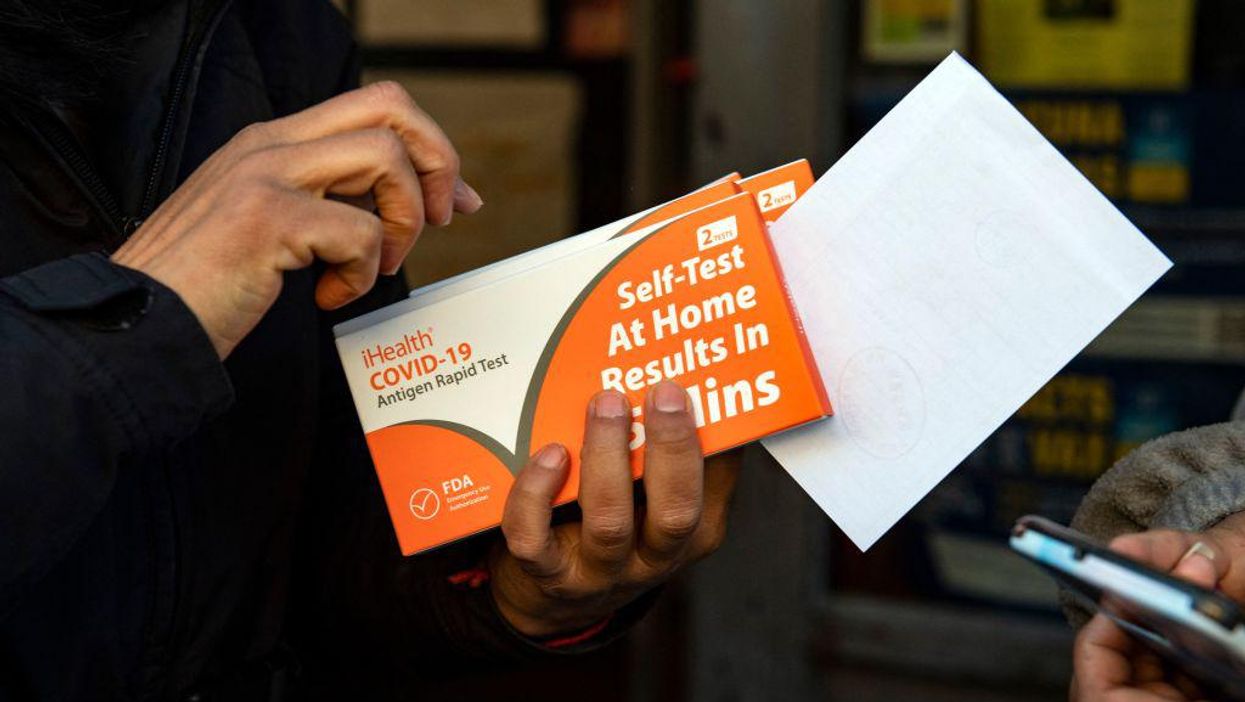
Photo by JOSEPH PREZIOSO/AFP via Getty Images

The U.S. Centers for Disease Control and Prevention has released updated guidance endorsing "test-to-stay" policies that will allow students exposed to someone with COVID-19 to stay in school if they test negative for the virus.
Many school districts across the nation have already implemented these test-to-stay policies, but the CDC's official guidance was not updated until Friday, when the agency published two studies that showed the policies did not lead to increased virus transmission in schools.
“Test-to-stay is an encouraging public health practice to help keep our children in school,” CDC Director Dr. Rochelle Walensky said.
Until now, CDC guidance for schools advised that when someone in a school tests positive for COVID-19, anyone who was in close contact with that individual should isolate in quarantine at home for at least 10 days.
But hundreds of schools in the U.S. have adopted test-to-stay policies as an alternative approach, and several states have funded statewide test-to-stay policies to ensure that students do not spend long periods of time out of the classroom, according to the Associated Press.
The CDC worked with some school districts to evaluate these programs and released two studies on Friday that showed test-to-stay is succeeding.
One study of K-12 schools in Los Angeles County examined a test-to-stay strategy adopted on July 12 that permitted unvaccinated students who were exposed to COVID-19 to stay in school if they regularly tested negative, were asymptomatic, and wore a mask while in school. The study found that keeping kids in school under these conditions did not increase transmission risk in public schools and "might greatly reduce loss of in-person school days."
A second study of schools in Lake County, Illinois, had similar results for a test-to-stay policy that was adopted in August. Close contacts of infected persons were allowed to stay in school provided both the infected person and the close contact were masked when an exposure may have happened, the close contact was asymptomatic, and the close contact was tested one, three, five, and seven days after exposure to the infected person.
In that study, COVID-19 infections developed in only 16 out of more than 1,000 close contacts who were tracked, a transmission rate of about 1.5%.
"Test-to-Stay is another valuable tool in a layered prevention strategy that includes promoting vaccination of eligible students and staff, requiring everyone age 2 and older wear a mask inside schools and facilities, keeping at least 3 feet of distance between students, screening testing, ventilation, handwashing, and staying home when sick," CDC officials said.
"Additionally, CDC recommends everyone ages 5 years and older get a COVID-19 vaccine to help protect against COVID-19. Adolescents ages 16 years and older can get a booster shot at least six months after a primary series. Widespread vaccination for COVID-19 is a critical tool to best protect everyone from COVID-19 and COVID-19 related complications," the agency added.
The CDC recommends that students who participate in test-to-stay should "consistently and correctly wear masks while in school and should stay home and isolate if they develop symptoms or test positive for SARS-CoV-2."
Schools that wish to adopt test-to-stay policies must have "robust contact tracing" programs and access to testing resources, the CDC said.